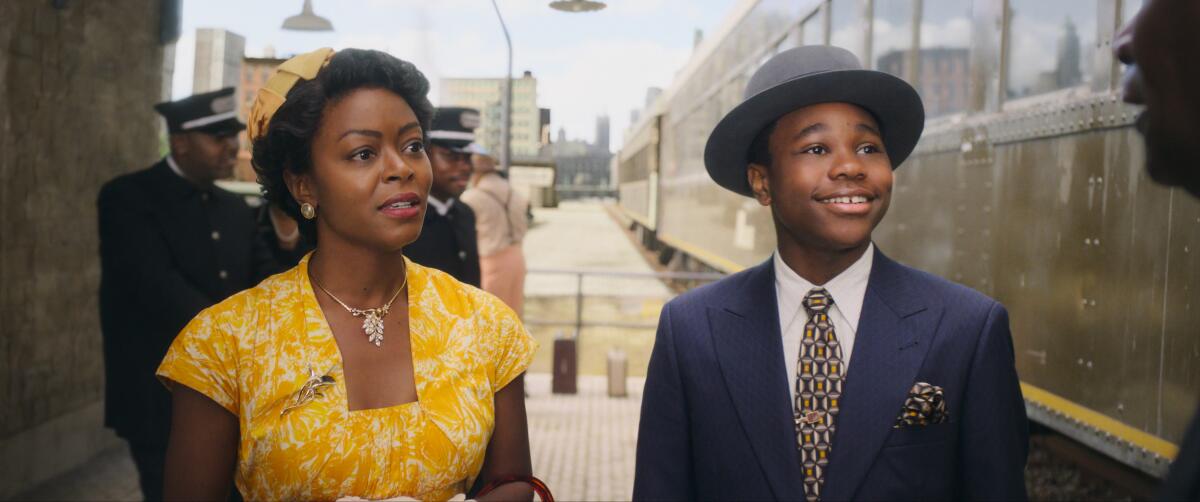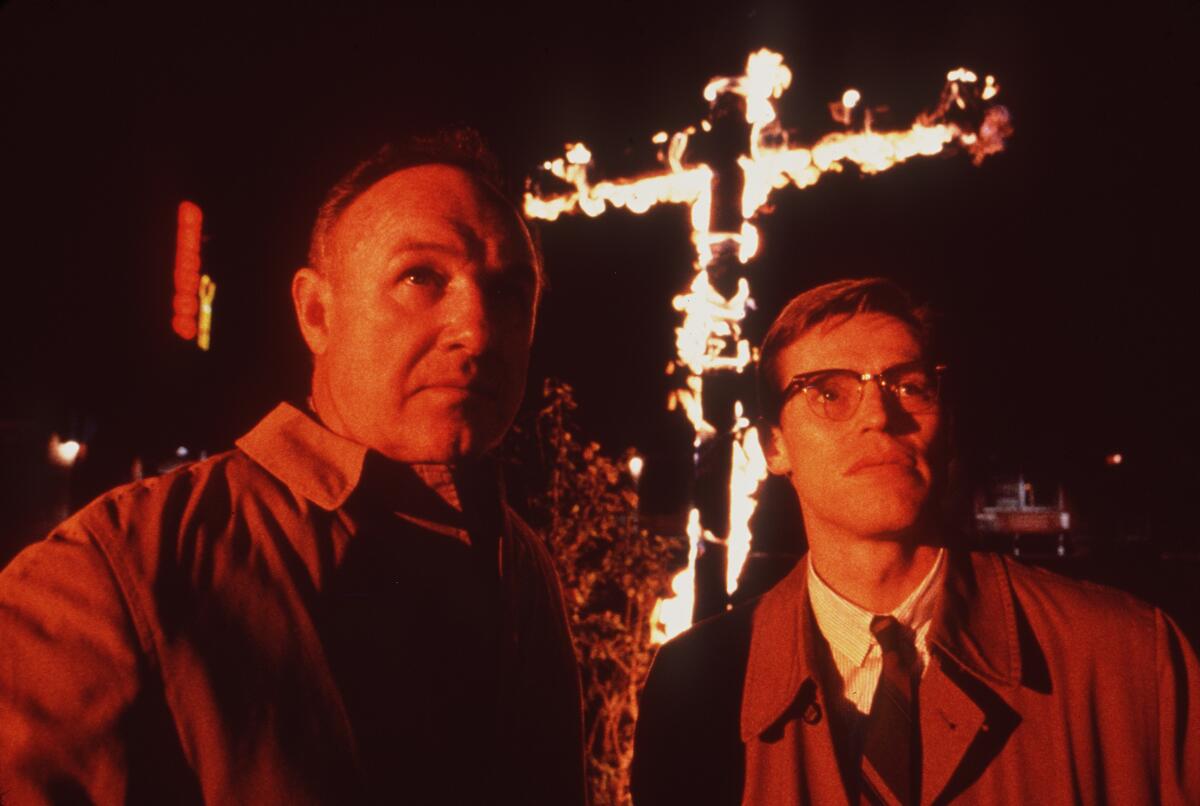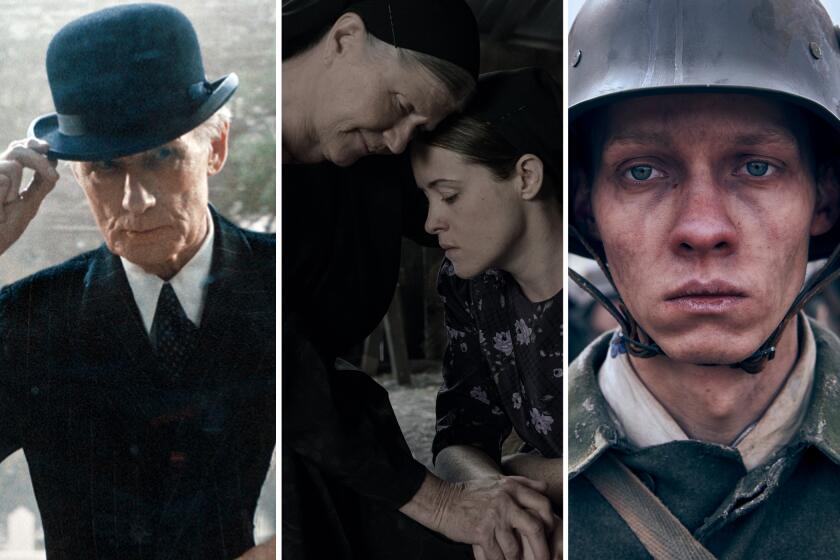How ‘Till’ stands out among civil rights movies

- Share via
The movie “Till” tells the story of how Mamie Till-Mobley (Danielle Deadwyler) channeled grief into fury and helped ignite the civil rights movement. Her 14-year-old Chicago-reared son, Emmett, went south in summer 1955 to visit relatives in Mississippi. There he was brutally murdered after a white shop owner concocted a story about Emmett making sexual advances toward her (a common lie used to justify countless lynchings during the Jim Crow era). The movie allows us to feel Mamie’s pain anew, and it dramatizes her courage in turning her son’s murder and mutilation into a civil rights cause. In choosing to give Emmett an open casket funeral, she insisted that the world look at what the killers, who were acquitted by an all-white, all-male jury, had done to her child.
Directed by Chinonye Chukwu, “Till” departs from many past movies about the civil rights movement in one crucial respect: It places its Black characters front and center in their struggle, rather than giving them roles subsidiary to white saviors. Think “Mississippi Burning” (1988), a highly entertaining movie that finds two of J. Edgar Hoover’s white FBI agents (Gene Hackman and Willem Dafoe) coming to save the day after three civil rights workers are killed in Philadelphia, Miss. Or “Ghosts of Mississippi” (1996), in which the murder of civil rights activist Medgar Evers is used as a vehicle of redemption for a white prosecutor (Alec Baldwin), with Evers’ widow, Myrlie (Whoopi Goldberg), confined to the background.
Director Chinonye Chukwu sees her film as about politics even though it focuses first on humanity and feeling.
That won’t fly anymore. Not with the continued death of Black Americans at the hands of law enforcement. And not with virulent racism creeping out from the edges of society at a level not seen in years.
“You have these critical race theory conversations being had by people who don’t even know what critical race theory is,” Deadwyler said in a telephone interview. “You have people who are trying to blatantly lie about what the truth of American history is. There is a need to challenge that. People have to see the film for that reason, and people have to see the film for the value in understanding what these families actually go through.”

Emmett Till’s murder is among the most infamous stories of the civil rights movement — which doesn’t mean everyone knows it. At a recent preview screening of “Till,” there were audible gasps at the discovery that the boy had been killed. It’s the kind of history that wasn’t always taught in school — and some would prefer it still weren’t.
“Till” isn’t the first civil rights movie to avoid the white-in-shining-armor trope (nor the first project to focus on Mamie Till-Mobley: The short-lived ABC anthology series “Women of the Movement,” starring Adrienne Warren, aired earlier this year). Ava DuVernay’s “Selma” (2014) starred David Oyelowo as the Rev. Martin Luther King Jr. but also found room for other key figures of the movement, from Diane Nash (Tessa Thompson) to Bayard Rustin (Ruben Santiago-Hudson). The film immersed itself in the details of organization and action. (It received two Oscar nominations, winning for original song).
The movie industry’s increasing diversity is one reason the movies continue to improve their record in depicting the civil rights movement.
“Hollywood’s approach to civil rights history has achieved a level of depth and complexity in films such as ‘Selma’ that would have been unimaginable in the bad old days of ‘Mississippi Burning’ hagiography,” says Peniel Joseph, a history professor at the University of Texas at Austin who has written extensively about the civil rights movement, including the new book “The Third Reconstruction: America’s Struggle for Racial Justice in the Twenty-First Century.” “This reflects the growing and diverse numbers of Black filmmakers, executives and creators whose efforts to understand the era has matched artistry with history to create something unique in the history of American cinema: films that simultaneously offer a reflection of the past, a mirror of the present and a window into the future.”
Our BuzzMeter film experts predict the Oscar winners in 10 categories. Check out the consensus picks, close races and interesting narratives - and vote in the polls for every category.
White people were often crucial allies in the civil rights movement (including James Schwerner and Andrew Goodman, who, along with James Chaney, paid with their lives in the murders that inspired “Mississippi Burning”). Their contributions are not to be diminished. Hollywood’s problem over the years has been choosing to tell only stories with which they could sell white heroes, even to the extent of turning the FBI, which often harassed and surveilled movement leaders, into a beacon of racial justice.
Movies such as “Till” and “Selma” help remedy this misplaced focus. The need for such films is urgent, the timing, unfortunately, perfect.
“This violence persists today,” Deadwyler says. “We should have compassion and empathy when we speak the names of people who have been lost as late as 2020, like Breonna Taylor and George Floyd. These individuals have left families behind them, families who carry their legacy. That’s the imperative nature of seeing the film: to challenge anyone who’s trying to resist the truth of American history and to challenge yourself to give greater respect and value and compassion to the families who are actually still experiencing this kind of tragedy today.”
More to Read
From the Oscars to the Emmys.
Get the Envelope newsletter for exclusive awards season coverage, behind-the-scenes stories from the Envelope podcast and columnist Glenn Whipp’s must-read analysis.
You may occasionally receive promotional content from the Los Angeles Times.









